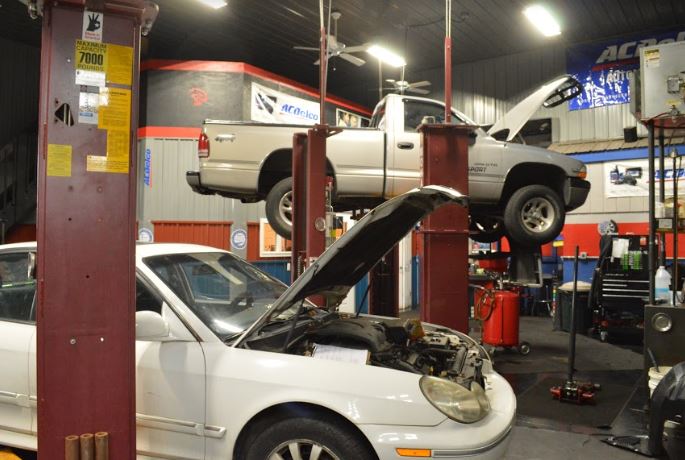Featured
Correct tire maintenance is vital to extending the life of your lorry and ensuring a smooth and secure driving experience. Two of one of the most vital tire solutions are tire rotation and placement. These services not just protect against premature tire wear but also enhance handling, gas performance, and overall security. If you're unknown with what tire turning and alignment involve, right here's a thorough consider why they matter and just how they profit your lorry.
What Is Tire Rotation? Tire rotation describes relocating your tires from one position to another to guarantee they wear evenly. The factor tire rotation is needed is due to the fact that not all tires put on the very same way. In front-wheel-drive cars, for example, the front tires handle both guiding and power, which makes them use out faster than the back tires. The back tires wear in different ways in rear-wheel-drive and all-wheel-drive lorries.
By rotating your tires routinely, you can cancel the wear throughout all four tires. This aids them last longer and permits more even traction, enhancing handling and security. Many suppliers suggest revolving your tires every 6,000 to 8,000 miles or as per the lorry's manual.
What Is Tire Alignment? Tire alignment, additionally referred to as wheel placement, describes the process of adjusting the angles of your vehicle's wheels to satisfy the maker's requirements. The objective of positioning is to guarantee that all 4 tires are pointing in the right instructions and at the correct angles, which enables optimum handling, safety, and tire life.
There are 3 primary positioning angles that are readjusted throughout a placement check:

Camber: The tilt of the wheels when watched from the front. If the camber is off, it can result in uneven tire wear, as the tire will certainly not make full contact with the roadway surface area. Wheel: The angle of the steering axis when checked out from the side. Correct caster placement ensures that your vehicle is secure when driving straight which your wheel returns to its normal setting after a turn. Toe: The angle at which the tires direct inward or external when checked out from above. Incorrect toe alignment can create the tires to drag, resulting in uneven wear and minimized gas performance. Imbalance can happen over time as a result of regular driving or from hitting obstacles like visuals or pockets. If your positioning is off, it is essential to obtain it checked and fixed to avoid concerns later on.
Why Tire Turning and Positioning Matter. Increased Tire Life:. Normal tire rotation makes certain also tire wear, helping you get one of the most mileage out of your tires. Unequal wear can cause you to replace tires prematurely, which can be pricey. When your tires put on evenly, they last longer, saving you money in the long-term.
Improved Car Handling:. Proper placement keeps your automobile driving straight and secure, especially at greater speeds. Imbalance can trigger your auto to draw away, making it harder to steer. By maintaining your tires lined up, you ensure your vehicle takes care of a lot more smoothly and naturally.
Enhanced Safety And Security:. Tires that are not turned or straightened correctly can put on unevenly, impacting how well your car stops and corners. Misaligned tires or tires with unequal wear patterns might create decreased grip, particularly in wet or icy conditions, leading to a greater danger of mishaps.
Better Fuel Effectiveness:. Tires that are misaligned can produce moving resistance, indicating your engine has to function more difficult to move the car. This increases gas usage and decreases your cars and truck's fuel effectiveness. Correct tire placement reduces rolling resistance, which can boost gas mileage.
Indicators Your Tires Required Turning or Positioning. While it's important to stay on top of routine tire rotations and alignments, there are a couple of indicators that might show your tires need attention:
Irregular Use: If you see that one tire is more used than the others, it's likely time for a turning. Steering Pull: If your car draws to one side or really feels off-center, maybe an indicator of imbalance. Resonances: If you really feel resonances in the guiding wheel or the auto, maybe as a result of a positioning issue. Noisy Tires: Squealing or loud tires might indicate inappropriate rotation or imbalance. If you observe any one of these indicators, it is essential to obtain your tires inspected by a specialist.
Exactly How Usually Should You Turn and Straighten Your Tires? Tire rotation must generally be done every 6,000 to 8,000 miles, though this can vary based upon your driving problems and the type of car you drive. It's likewise an excellent idea to have your tires turned whenever you obtain an oil adjustment.
For positioning, you should have your tires aligned every 1-2 years, or much more regularly if you observe any type of issues with dealing with or unequal tire wear. If you struck a huge fracture or aesthetic, it's smart to get an alignment examine today.
Verdict: Routine Maintenance for Ideal Efficiency. Tire rotation and alignment are two straightforward yet crucial services that maintain your auto running efficiently, efficiently, and securely. By rotating your tires consistently and keeping your wheels appropriately aligned, you can prolong the life of your tires, enhance handling, and enjoy far better gas efficiency.
Latest Posts
Raise Your Residential Or Commercial Property with Ornamental Iron Fencing
Classy, Long Lasting Ceramic Tile Flooring for each Space
Checking out the Perks of WyHy Share Interest-bearing Account
More
Latest Posts
Raise Your Residential Or Commercial Property with Ornamental Iron Fencing
Classy, Long Lasting Ceramic Tile Flooring for each Space
Checking out the Perks of WyHy Share Interest-bearing Account